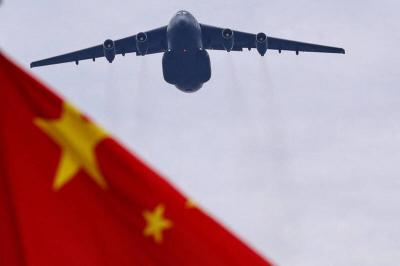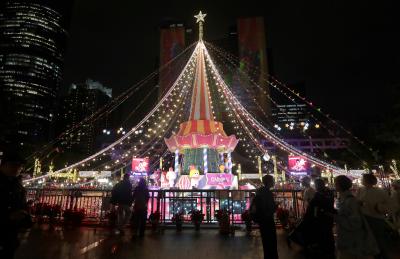A majority of Taiwanese continue to suffer psychologically by sympathizing with their former captors, said a Taiwanese-American psychiatrist, who urged them to shake off their condition by recognizing their own worth and value.
Lin Ih-foo (林毅夫), from Hsinchu County, is a psychiatrist in the US and the author of Psychological Analysis of the Taiwanese’s Self-abusing Behavior (台灣人的受虐性格的心理分析), a book that looks at the complex psychological relationship between Taiwanese and the Chinese Nationalist Party (KMT).
Lin argues that many Taiwanese suffer from Stockholm syndrome, a term coined in 1973 after a bank robbery in the capital of Sweden. Following their release after being held hostage for more than five days, tellers at the bank displayed affection for the hostage-takers.
Another well-known case is that of Patricia Hearst, the granddaughter of media tycoon Randolph Hearst, who was abducted by the Symbionese Liberation Army in 1974. Two months after her kidnapping, the 19-year-old became active in the militant group and participated in a robbery.
The argument that she was suffering from Stockholm syndrome was rejected by the courts and she was convicted.
In an interview with the Taipei Times earlier this month, Lin said the syndrome is the result of psychological change in an individual held captive. The victim develops an emotional attachment to his or her captors and becomes hostile toward the rescuer.
The captor is seen as key to the hostage’s survival.
“The victim believes that the rescuers are jeopardizing his or her chances of survival and ends up adopting the captor’s beliefs and value system,” he said, adding that victims will try to protect their captors by showing concern for their wellbeing.
The three elements that contribute to Stockholm syndrome, he says, are a power imbalance that leads the victim to live in a perpetual state of fear.
“The second factor is the isolation of the victim, which leads to total dependence on the captor. The only information the captive receives comes from the captor,” he said.
“Finally, every so often the captor grants favors and the boundary between the captor and the captive becomes blurred,” he said.
Drawing a parallel between the KMT and Taiwanese, Lin said the circumstances and the behavior of Taiwanese are very similar to those of the victims of the bank robbery in Sweden.
“First, there was the 228 Massacre, where people lived in fear for a long time after it happened. Subsequently, there was the Martial Law era. People lived in fear for 40 years and during that time the livelihood of Taiwanese was dependent on the KMT regime,” he said.
Under the KMT and with help from abroad, standards of living improved and the KMT periodically provided “favors” to different interest groups such as the military, government workers, teachers, fishermen, laborers and farmers.
Members of these groups, he said, began to develop an affinity for the KMT. Even after martial law was lifted in 1987, “the machinery of the rulers” remained in place through education, the legal system and the media, which continued to propagate the KMT belief system.
Rather than point fingers at the KMT, Taiwanese sided with the regime while condemning those who opposed the “captor,” Lin said.
“When someone was arrested for speaking out against the government, people tended to say that the person deserved it, that he or she had a big mouth. In their view, the victim was the bad guy and whatever happened to the victim had nothing to do with them,” Lin said.
Many Taiwanese would also jump to the KMT’s defense — even when the party committed things that were against the interests of the public.
During martial law, many people justified government-imposed restrictions that said Taiwanese had nothing to fear as long as they obeyed the rules, Lin said.
Su An-sheng (蘇安生) is a good example, Lin said. Last year, Su, a staunch pan-blue supporter, kicked former Democratic Progressive Party (DPP) president Chen Shui-bian (陳水扁) in the rear as the former president was on his way to court. Su also physically assaulted former Taiwanese representative to Japan Koh Se-kai (許世楷).
In July, Su was beaten by two men in Taipei. His arm was broken.
“Rather than condemn Su’s violent acts, many people only denounced the violence that was done to him,” Lin said.
The KMT belief system is gaining strength, he said, principally through the use of language.
“Expressions such as ‘cross-strait,’ ‘mainland tourists’ and ‘mainland investment’ send the message that the relationship between Taiwan and China is one between a district and a country rather than two separate countries,” he said.
When the relationship between Canada and the US is described, no one says “this side of the Niagara Falls and that side of the Niagara Falls,” he said.
“People simply say Canada and the US,” Lin said.
From a clinical angle, contemporary Taiwan has a mixed prognosis — also common in sufferers of Stockholm syndrome — given the re-election of the KMT last year, he said.
“While many people’s views haven’t changed, in the past 10 or 12 years we have seen a strengthening of Taiwan-centric consciousness,” he said.
“More attention is paid to Taiwanese history and culture, and a certain sense of pride has developed,” Lin said.
In a normal doctor-patient relationship, the doctor’s job is to show the patient that he or she can lead a good life without help from the captors, he said.
When it comes to Taiwan, however, the “doctor” is the independence movement — the musicians, teachers, authors and politicians who tell the people that they can live a happy, safe and prosperous life as Taiwanese without being absorbed by China.
Despite some visible progress, Lin said the end result remained in doubt.
“It will fall on Taiwanese to determine the outcome,” he said.

Beijing could eventually see a full amphibious invasion of Taiwan as the only "prudent" way to bring about unification, the US Department of Defense said in a newly released annual report to Congress. The Pentagon's "Annual Report to Congress: Military and Security Developments Involving the People's Republic of China 2025," was in many ways similar to last year’s report but reorganized the analysis of the options China has to take over Taiwan. Generally, according to the report, Chinese leaders view the People's Liberation Army's (PLA) capabilities for a Taiwan campaign as improving, but they remain uncertain about its readiness to successfully seize

Taiwan is getting a day off on Christmas for the first time in 25 years. The change comes after opposition parties passed a law earlier this year to add or restore five public holidays, including Constitution Day, which falls on today, Dec. 25. The day marks the 1947 adoption of the constitution of the Republic of China, as the government in Taipei is formally known. Back then the Chinese Nationalist Party (KMT) governed China from Nanjing. When the KMT, now an opposition party in Taiwan, passed the legislation on holidays, it said that they would help “commemorate the history of national development.” That

HORROR STORIES: One victim recounted not realizing they had been stabbed and seeing people bleeding, while another recalled breaking down in tears after fleeing A man on Friday died after he tried to fight the knife-wielding suspect who went on a stabbing spree near two of Taipei’s busiest metro stations, Taipei Mayor Chiang Wan-an (蔣萬安) said. The 57-year-old man, identified by his family name, Yu (余), encountered the suspect at Exit M7 of Taipei Main Station and immediately tried to stop him, but was fatally wounded and later died, Chiang said, calling the incident “heartbreaking.” Yu’s family would receive at least NT$5 million (US$158,584) in compensation through the Taipei Rapid Transit Corp’s (TRTC) insurance coverage, he said after convening an emergency security response meeting yesterday morning. National

Taiwan has overtaken South Korea this year in per capita income for the first time in 23 years, IMF data showed. Per capita income is a nation’s GDP divided by the total population, used to compare average wealth levels across countries. Taiwan also beat Japan this year on per capita income, after surpassing it for the first time last year, US magazine Newsweek reported yesterday. Across Asia, Taiwan ranked fourth for per capita income at US$37,827 this year due to sustained economic growth, the report said. In the top three spots were Singapore, Macau and Hong Kong, it said. South